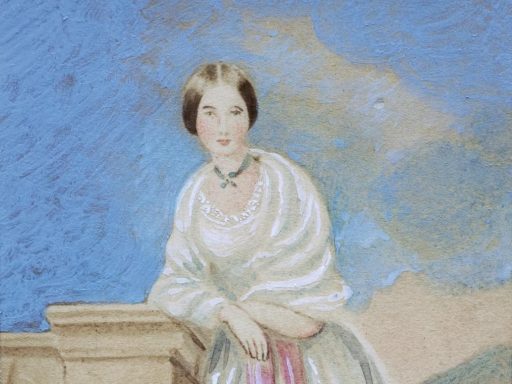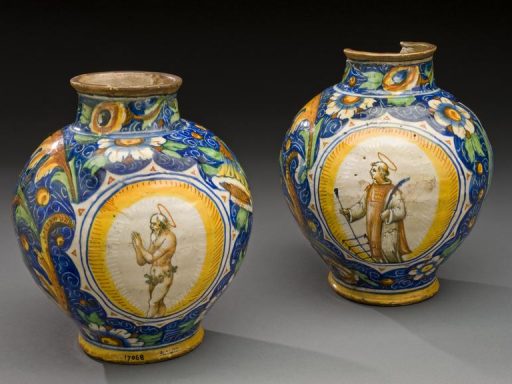Following the release of The King’s Speech with Colin Firth, it inspired me to look into the two brothers of the film, Edward VIII and George VI using the Science Museum’s collections as my pool of reference. I was pleasantly surprised with the things I found. Following a visit to an orthopaedic hospital in Stoke-on-Trent, the then future Edward VIII, had his hand x-rayed. It was a way of showing off a technology that by the 1930s was in every hospital […]
As part of the medical curatorial team, Selina is Curator of Clinical and Research Medicine. She worked on the Engineers gallery looking at biomedical engineering and was lead curator of the Medicine and Treatments gallery. During the pandemic, Selina collected objects for the collection related to COVID-19, from testing kits to home made crafts to support key workers. She has an interest in the ways people and objects intersect to tell stories about medical places and treatment. During her time at the museum, Selina has worked on meteorites, clocks, climate science and almost everything in between.
I often get asked what skills you need to be a curator. As a medical curator, the one I’ve found most useful is having a strong stomach. Unsurprisingly, we have large amounts of blood-related items in the collections including bleeding bowls, lancets, leech jars, cupping sets and even mechanical leeches. Blood was let from patients to restore their the balance of their humours. For instance, a fever was a sign of too much hot blood running through the body so to return equilibrium, […]
Here’s the final installment of our festive 4-parter – the 12 days of Christmas re-worked with items from our collections. Check out part 1, part 2 and part 3 as well. On the tenth day of Christmas my true love gave to me… 10 Lords a-Leaping You won’t be surprised to learn that there is a large amount of memorabilia in the collection relating to famous Lords. Lord Nuffield, also known as William Morris is best remembered for work in car manufacturing. He was also […]
Here’s the third installment of our festive 4-parter – the 12 days of Christmas re-worked with items from our collections. Check out part 1 and part 2 as well. On the seventh day of Christmas my true love gave to me… 7 Swans a-Swimming Protected by the queen, swans hold a special place in British hearts. In the history of medicine, swan-necked retorts helped one man, Louis Pasteur, develop his germ theory. Pasteur used swan-necked flasks during his experiments on fermentation. The flask […]
With the recent release of Burke and Hare, it got me thinking about bodysnatching. Learning anatomy, then and now, meant practicing dissections on cadavers or watching a dissection in an anatomy theatre. Bodies were often in short supply as dissection was taboo for social, cultural and religious reasons. The only bodies that were legally available were executed criminals. Stealing a body was not a criminal offence as technically, the body could not be owned by anyone. If clothes or jewellery were taken, well, that’s […]
Any readers of the blog will know my obsession with our mobile X-ray bus! If anyone caught ‘Call the Midwife‘, you may have seen our X-ray bus in all of its glory around 33 minutes in (link works for UK audiences only). Marta Leskard, our very own Conervation and Collections Care Manager, had a starting role as an extra! The episode told the story of mass miniature radiography coming to the East End. These are the first words you read […]
For the past six months, I’ve been working on an exhibition Psychoanalysis: The unconscious in everyday life which opened in the middle of October. Curated by Dr Caterina Albano, from Artark at Central St Martins and sponsored by the Institute of Psychoanalysis, the exhibition looks at the workings of the unconscious mind through historical and contemporary artefacts. As well as drawing on contemporary art by artists such as Grayson Perry, Tim Noble and Sue Webster and Mona Hatoum, some of our […]
The witching hour is fast approaching and ghouls, ghosts and monsters are coming out to play – but I’ll bet you’ve never seen anything quite like this. I’m not sure what scares me the most about the chimera we lovingly call the ‘merman’ – the strange stitching together of bird, fish and monkey, or the rather creepy pose or the way the eyes follow you around a room. The merman is more reminiscent of an animal version of Frankenstein than a museum […]
As a warm up for Ask a Curator day tomorrow, I thought I would give you an in-depth look at one of our objects that has been generating a lot of comments on Twitter. You may remember a post by my colleague, Stewart, on Arms, legs and ex-Servicemen showing our 20th century collection of prosthetic limbs. The history of artificial limbs is inseparable from the history of amputations and closely linked to warfare. This artificial arm was made for someone who had their left arm amputated above […]

Selina Hurley explores the life and work of Florence Nightingale, the Lady with the Lamp.

When you think of a medical collection, shelves packed with statues of saints aren’t the first thing that spring to mind, Selina Hurley, curator of medicine, tells us more.
Its a worrying title for a blog, but ‘remember that you must die’ or ‘memento mori’ in Latin, was a common saying that our historical counterparts took to heart. Popular from the 16th to the 19th centuries, memento moris can can be anything from pocket watches, pendants, rings, ribbon slides, even statues and walking sticks. Some carried a lock of hair from a departed loved one, woven into a scene. Most show skeletons, skulls or coffins and – not for […]